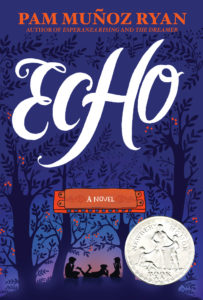American writer Paul Beatty brings back slavery and segregation to win the £50,000 Man Booker Prize
( My review of the Man Booker Prize 2016 winner The Sellout by Paul Beatty was published by Scroll on 26 Oct 2016, a day after the win was announced. Here is the original url: http://scroll.in/article/819961/american-writer-paul-beatty-brings-back-slavery-and-segregation-to-win-the-ps50000-man-booker-prize . I am also c&p the text below. )
‘The Sellout’ is a wicked satire on racism, and makes Beatty the first American to win the Man Booker.

This may be hard to believe, coming from a black man, but I’ve never stolen anything. Never cheated on my taxes or at cards. Never snuck into the movies or failed to give back the extra change to a drugstore cashier indifferent to the ways of mercantilism and minimum-wage expectations. I’ve never burgled a house. Held up a liquor store…But here I am, in the cavernous chambers of the Supreme Court of the United States of America, my car illegally and somewhat ironically parked on Constitution Avenue, my hands cuffed and crossed behind my back, my right to remain silent long since waived and said goodbye to as I sit in a thickly padded chair that, much like this country, isn’t quite as comfortable as it looks.
~~~
That’s the bitch of it, to be on trial for my life, and for the first time ever not feel guilty. That omnipresent guilt that’s as black as fast-food apple pie and prison basketball is finally gone, and it feels almost while to be unburdened from the racial shame that makes a bespectacled college freshman dread Fried Chicken Fridays at the dining hall. I was the “diversity” the school trumpeted so loudly in its glossy literature, but there wasn’t enough financial aid in the world to get me to suck the gristle from a leg bone in front of the entire freshman class.
Paul Beatty’s satirical novel The Sellout is a magnificently absorbing story told by a nameless narrator who is referred to by his girlfriend as “Bonbon”. The novel opens with him in court not for a petty crime like stealing, but for encouraging racial segregation and slavery. The narrator has been born in the “agrarian ghetto” of Dickens, a suburb of Los Angeles.
A work of contemporary fiction that revolves around histories of family,The Sellout comes with a twist. It covers only two generations – father and son, and what happens next. Among other things, this includes the reintroduction of slavery and segregation. The father of the narrator is a single parent and a sociologist, who turns his only son into an on-going social experiment in childrearing methodologies.
For instance, the father ties his four-year-old son’s right hand behind his back so that he can grow to be left-handed, right-brained, and well-centered. Or, he tests the “bystander effect” as it applies to the “Black community” on his eight-year-old son by beating the boy in front of a throng of bystanders who don’t stand around for too long. Sadly the father is killed in a police shoot out. The narrator is left bewildered.
You’re supposed to cry when your dad dies. Curse the system because your father has died at the hands of the police. Bemoan being lower-middle-class and coloured in a police state that protects only rich white people and movie stars of all races, though I can’t think of any Asian-American ones. But I didn’t cry. I thought his death was a trick. Another one of his elaborate schemes to educate me on the plight of the black race and to inspire me to make something of myself, I half expected him to get up, brush himself off, and say, “See, nigger, if this could happen to the world’s smartest black man, just imagine what could happen to your dumb ass. Just because racism is dead don’t mean they don’t shoot niggers on sight.”
The inheritance is downright bizarre – the son, like his father, becomes a “nigger whisperer”. It is one of these men he “rescues”, Hominy Jenkins, “the last surviving member of the Little Rascals”, who becomes a devoted slave to the narrator. Curiously enough, just as he was his father’s little social experiment, the narrator turns his neighbourhood into a larger sociological study by promoting segregation to the extent of drawing a white boundary line around the space.
The Sellout maintains a mad pace of breathless storytelling that sometimes only works effectively if read out aloud. In an interview recorded in May 2015, Beatty, pokes fun at racial politics but insists that the novel is about a ton of other things too. ( (https://www.youtube.com/
The Man Booker winner says his approach involves humour and personal experience. “I am starting from myself.” With the American presidential elections due in less than a month, was the jury specially influenced by the issues raised in this novel? It is a stupendous decision by the Man Booker Prize judges in awarding the £50,000 award to Paul Beatty for The Sellout. It is the first time an American has won the prize. It is a doubly sweet win for independent publishers Oneworld who have probably made publishing history for their back-to-back win at the prestigious literary award. The Man Booker Prize 2015 awarded to A Brief History of Seven Killings by Marlon James was a Oneworld publication too. In the subcontinent Pan MacMillan India represents and distributes Oneworld.
As a poet, writer, and a trained psychologist, Beatty has brought his vast experience in writing and understanding human behaviour to produce a magnificently raw, hard-hitting, fantastically honest, take-your-breath-away work of dark humour. The Sellout is satire at its finest. At times it is hard to believe this is fiction and not excellent reportage.
Paul Beatty The Sellout Oneworld,London, 2016. Pb. pp. 288 Rs 399
26 Oct 2016



